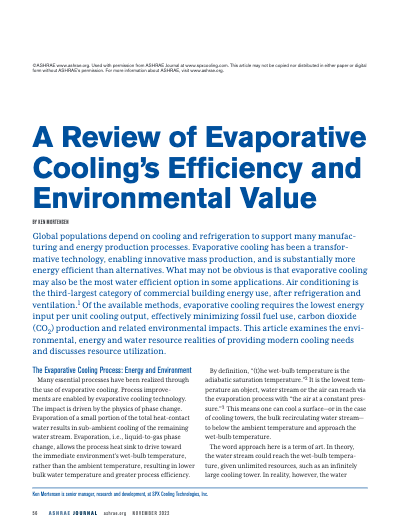Global populations are dependent on cooling and refrigeration to support many types of manufacturing and energy production processes. Evaporative cooling has been a transformative technology, enabling innovative mass production, and is substantially more energy efficient than alternatives. What may not be obvious is that evaporative cooling may also be the most water efficient option in some applications. Air conditioning is the third-largest category of commercial building energy use, after refrigeration and ventilation. Of the available methods, evaporative cooling requires the lowest energy input per unit cooling output, effectively minimizing fossil fuel usage, CO2 production and related environmental impacts. This article examines the environmental, energy and water resource realities of providing modern cooling needs and discusses resource utilization.


